Originally a privateer operating within the bounds of the law, Captain William Kidd was found guilty of piracy and hanged in 1701 — but some believe that he was unfairly convicted.
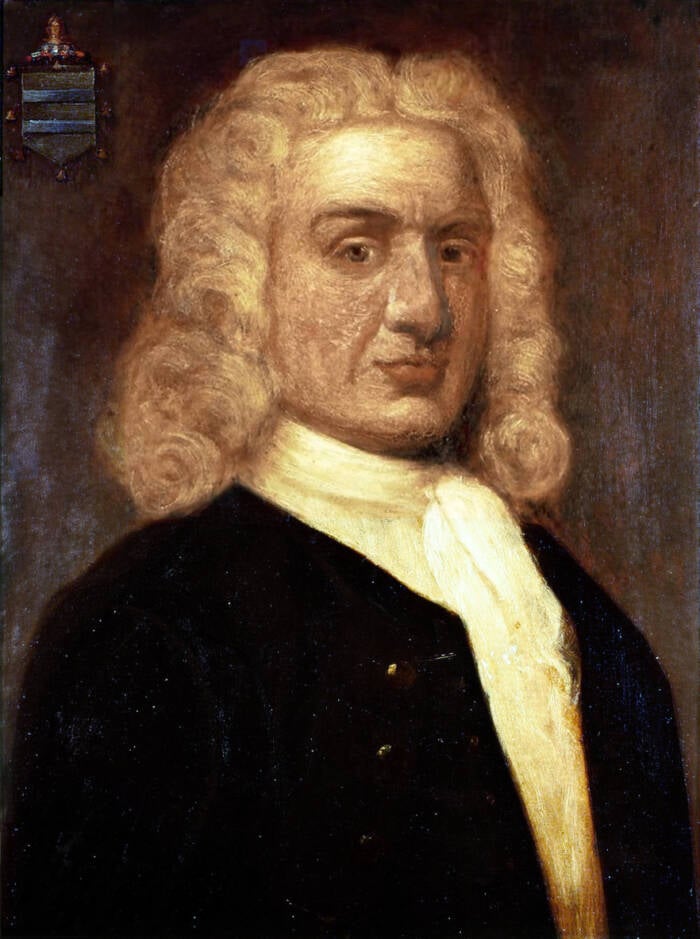
Public DomainA portrait of Captain Kidd made in the early 18th century.
Few figures in maritime history are as shrouded in mystery and controversy as Captain Kidd, a man whose life straddled the line between privateer and pirate, hero and villain.
William Kidd began his career working as a sailor and privateer on both sides of the Atlantic Ocean. By the late 1690s, Kidd was even commissioned to hunt down pirates and protect British interests in the Caribbean. But the lines between privateers and pirates was becoming increasingly blurred, and Kidd eventually returned to shore a wanted man.
Betrayed by his political backers, Kidd was arrested in 1699, extradited to England, tried for piracy and the murder of a crew member — and executed. Hanged and gibbeted as a warning to others, his body remained displayed above London’s Thames River for years.
Despite his tragic end, Captain Kidd’s story of betrayal, piracy, and political intrigue endures, making him one of history’s most notorious pirates.
From Scotland To A Successful Life At Sea
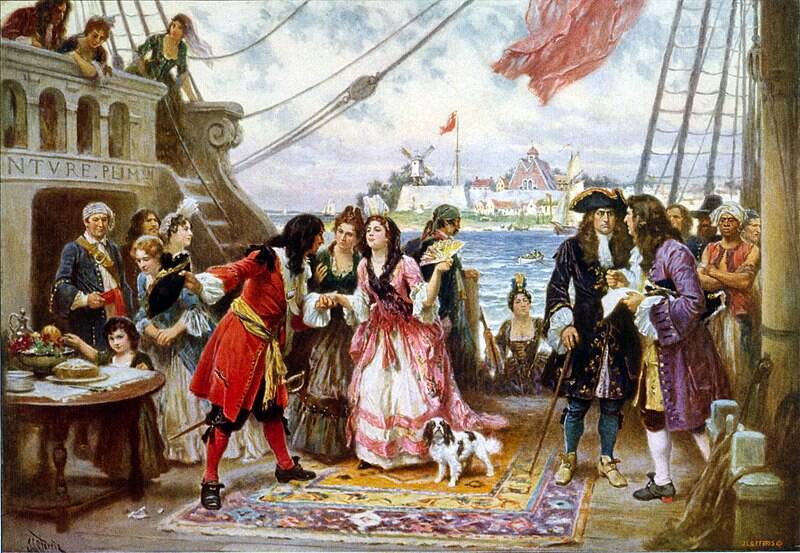
Public DomainCaptain Kidd in New York Harbor by Jean Leon Gerome Ferris c. 1920.
William Kidd was born in Dundee, Scotland at the tail-end of the 17th century (some sources say 1645, others 1654). His mother’s name was Bessie Butchart, and his father, John Kidd, was a seaman.
Very little is known about Kidd’s early life, but it is clear he developed a love for the sea early on. He began working on ships at a young age and, though he sometimes worked with pirates, Kidd also developed a good reputation as a privateer. (The line between “pirate” and “privateer” was thin during Kidd’s early life, but privateers generally worked on the behalf of a government, whereas pirates worked for themselves.)
In the 1680s, Kidd made his way west, where he found work as a privateer working on behalf of the English government. In the Caribbean and along the North American coast, Kidd sailed in a ship called the Blessed William, seeking out French vessels to attack and plunder. Kidd’s official task was to protect English trade interests but, as a privateer, he was also had a right to some of the riches captured from an enemy’s ship.
From this point on, Kidd enjoyed a good reputation back in the British colony of New York. On May 16, 1691, Kidd even married one of New York City’s wealthiest widows, Sarah Bradley Cox Oort.
Things seemed to be getting better and better for Captain Kidd, especially when he received a royal commission to be a privateer in 1695. But what seemed like a blessing would soon turn out to be a curse.
How Captain Kidd Went From Privateer To Pirate
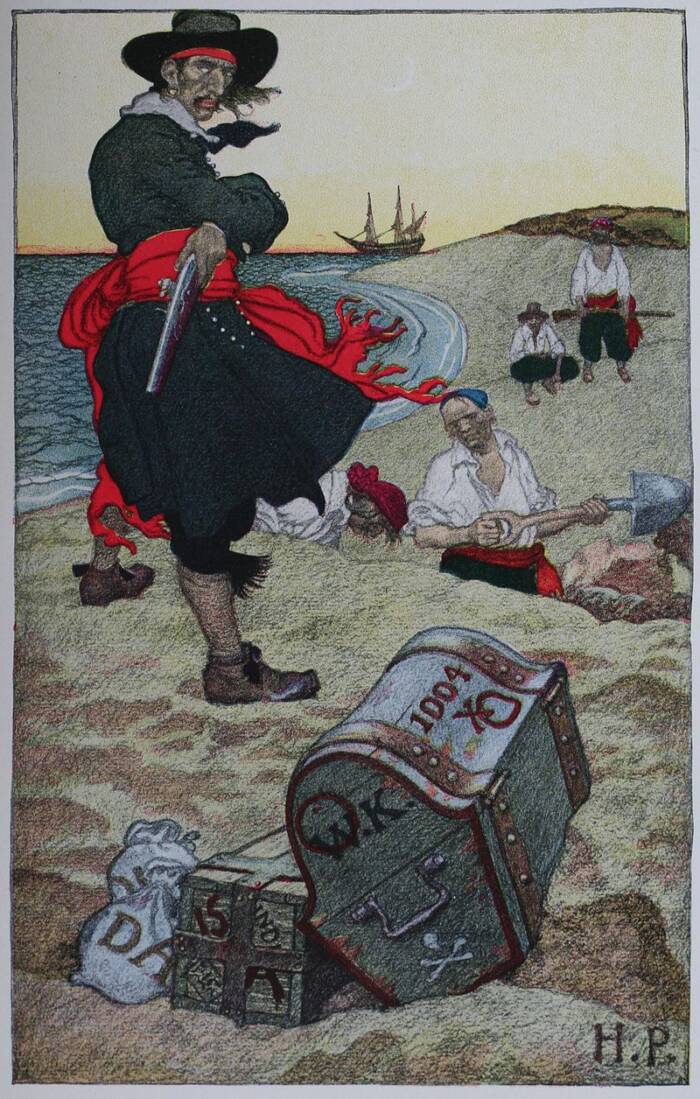
Public DomainA depiction of Captain Kidd burying treasure in Howard Pyle’s Book of Pirates: Fiction, Fact & Fancy Concerning the Buccaneers & Marooners of the Spanish Main.
In 1695, Captain William Kidd received a royal commission to attack pirates and French ships in the Indian Ocean in order to protect English trade routes. Officially, his mission was to attack the ships and protect English trade. However, it was understood that Kidd and his crew would “pirate” any loot they captured, and, indeed, even his benefactors expected to profit.
However, Kidd was expressly forbidden from plundering friendly ships, regardless of how much wealth they carried.
“We do strictly charge and command you, as you will answer to the contrary at your peril, that you do not, in any manner, offend or molest our friends or allies, their ships or subjects, by colour or pretence of these presents, or the authority granted,” Captain Kidd’s royal commission stated, according to a 2011 article from the University of Sheffield.
To prepare his ship, the Adventure Galley, Kidd employed 150 reputable sailors and set out from London on Feb. 27, 1696. However, Kidd quickly ran into trouble when a run-in with the English Navy upended his mission.
As the U.S. Naval Institute reports, Kidd made a damning error while sailing down the Thames River. Then, he neglected to properly salute a Royal Navy vessel. When the ship fired a warning shot at Kidd’s crew, his men then turned around, dropped their trousers, and slapped their bare bottoms.
The Royal Navy could not tolerate such blatant disrespect, and subsequently “pressed” 20 of Kidd’s best sailors into service. When Kidd protested, the Royal Navy offered up 20 replacements — not sterling sailors, but scallywags. And when Kidd tried to look for more men to fill his ranks in New York, he succeeded in only finding “men of desperate fortunes,” according to Benjamin Fletcher, the colonial governor of New York.
By September 1696, Kidd and his crew had sailed to the Indian Ocean, where their problems multiplied. Not only did Kidd fail to protect a number of English vessels in the area, but he attacked vessels that were supposed to be under English protection. Meanwhile, a third of his crew died of cholera (and had to be replaced) and the surviving men became increasingly mutinous over Kidd’s refusal to target English vessels laden with riches.
To survive, Captain Kidd began to act in a piratical manner. He killed his gunner, William Moore, during an argument, and, in the summer of 1697, flew a crimson flag while attempting to attack a convoy. (According to the U.S. Naval Institute, this meant “Surrender. No Quarter” and was a sign of piracy.)
Then, in early 1698, Kidd and his crew captured the Quedagh Merchant. Though the ship was sailing under French protection and was, thus, a legitimate target for Kidd, he broke protocol by dividing the spoils with his men. This, and Kidd’s decision to dock his ship in Ile St Marie, a notorious pirate den near Madagascar, began to raise eyebrows among his benefactors.
Indeed, Captain Kidd soon learned that he was a wanted man. Apparently convinced of his own innocence, Kidd sailed back to North America — with a pit stop to bury some of the Quedagh Merchant loot on Gardiners Island (and perhaps on Oak Island) — and arrived in Boston in 1799.
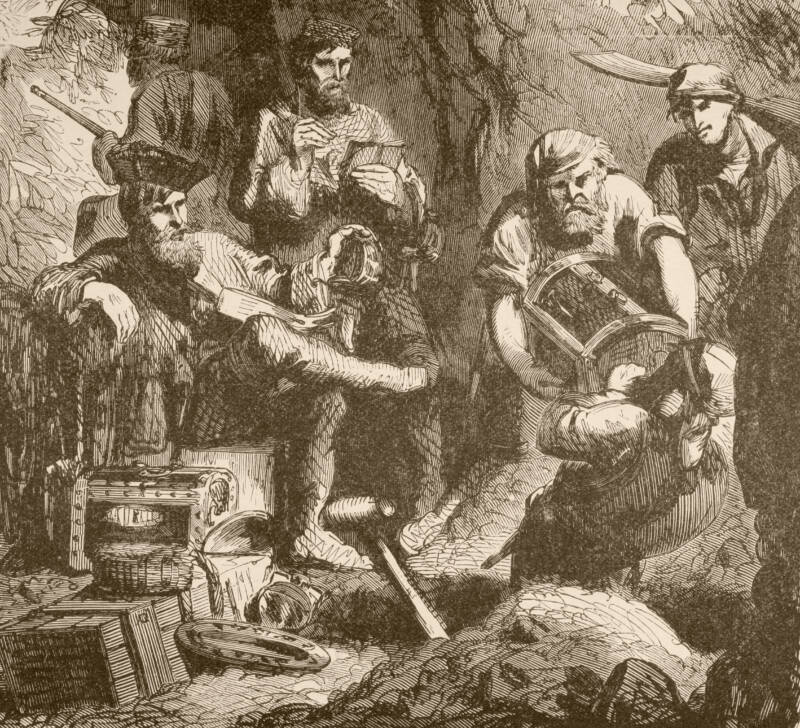
Classic Image / Alamy Stock PhotoCaptain Kidd burying his treasure.
But any pleas of innocence on his part seemed to fall on deaf ears. That July, Captain Kidd was arrested by one of his former benefactors — and sent back to England to stand trial.
The Trial And Execution Of The World’s Most Famous Scottish Pirate
After spending time in a Boston prison, Kidd was sent back to England to stand trial. His trial began in May 1701 in the House of Commons, where he faced charges of piracy and murder (of Moore).
Despite desperate pleas to prove his innocence, Kidd ultimately realized the case was stacked against him from the start. His backers would not be coming to his aid – in fact, they wanted him dead and quiet. Not only had attitudes about pirates and privateers changed since Kidd first took to the seas, but he’d also made a fatal error by capturing the Quedagh Merchant, a ship with ties to the powerful East India Company.
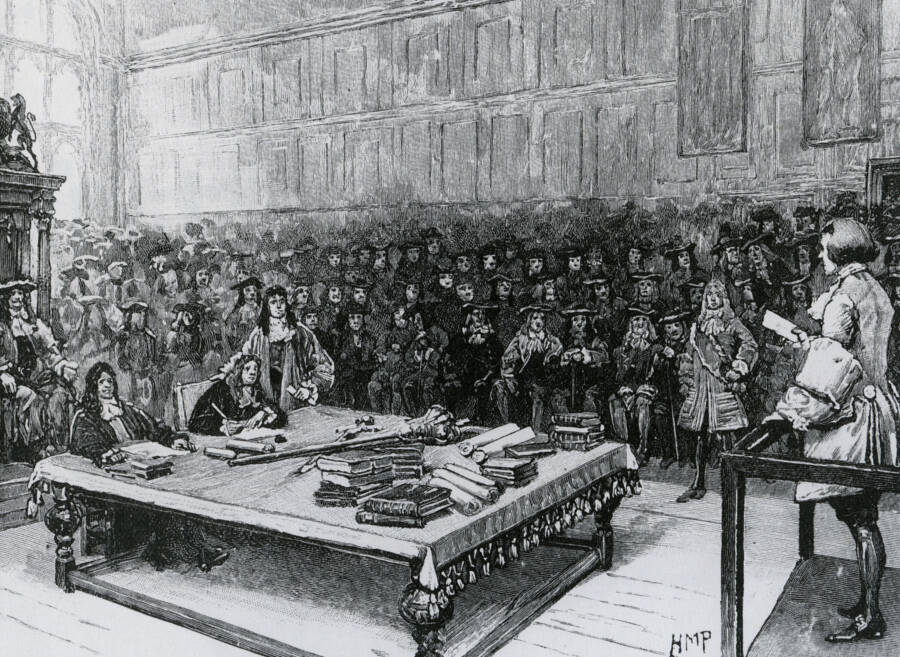
Pictorial Press Ltd / Alamy Stock PhotoTrial of Captain Kidd before Parliament in March 1701.
“I will not trouble this court any more, for it is folly,” Kidd sadly stated at his trial, according to the University of Sheffield.
Ultimately, he was found guilty of piracy and murder — and sentenced to death. Upon hearing the verdict, Kidd reportedly said: “My Lord, that is a very hard sentence. For my part I am the most innocentest person of them all, for I have been sworn against by perjured persons.”
However, mercy would not come for Captain Kidd. On May 23, 1701, he was publicly hanged at Execution Dock in London. (Torturously for Kidd, his executioners had to hang him twice after the hangman’s rope snapped the first time.) Afterward, he was gibbeted over the Thames as a warning to any would-be pirates for over three years.
Following his death, many questions have been raised about Kidd’s guilt. He had blurred the line between pirate and privateer — but no more than others had before him. What’s more, some evidence that could have helped Kidd was purportedly suppressed. And some questioned whether the charges against him really merited an execution.
Rather, it seems that Captain Kidd may have been in the wrong place at the wrong time; a law-bending privateer during an era of shifting opinions about piracy.
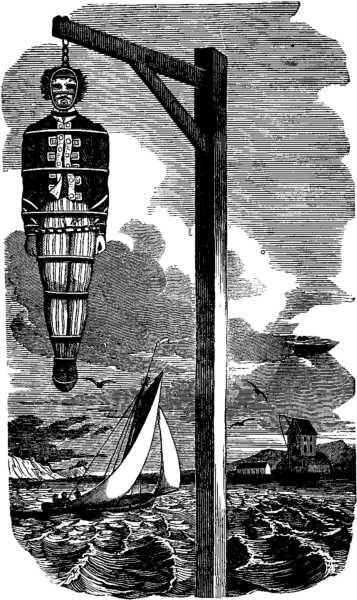
Public DomainAn illustration of Captain Kidd gibbeted in Essex, England following his execution in 1701.
However, Kidd’s story did not end with his execution. To this day, Captain Kidd remains a legendary figure in pirate history who has been immortalized in books, television, and music. Robert Louis Stevenson was one such writer to find inspiration in Kidd’s story, and incorporated aspects of it in his famous novel Treasure Island.
After reading about Captain Kidd, dive into the true story of Henry Every, the pirate who pulled off the most lucrative raid in piracy history. Then, read about Calico Jack, the pirate who fought alongside his pirate wife, Anne Bonny.





